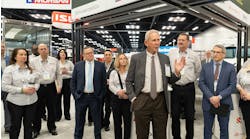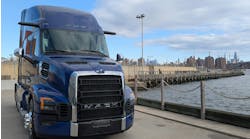There are significant differences between U.S. needs for an hours-of-service electronic onboard recorder (EOBR) and the digital tachograph mandated for all commercial drivers in Europe as of last August, according to Ralf Bosch, director of international relations for Siemens AG. The company's automotive electronics division — Siemens VDO — is one of the largest suppliers of digital tachographs.
The first difference is that European recorders capture both hours on-duty and vehicle speed, while it's clear that any U.S. required EOBR would only capture HOS information, Bosch told Fleet Owner.
More significantly, European trucks are generally integrated products from a single manufacturer, while U.S. truck users tend to specify their own preferred components from a number of suppliers, making integration of a secure recording system more difficult in America, he said. Also, Europe has set up the legal infrastructure to maintain a centralized database for controlling driver ID cards and certification of repair facilities needed to ensure the integrity and security of the collected data. The American market would have to make decisions on how to achieve that same security level, he pointed out.
The most important decision still awaiting action from the Federal Motor Carrier Safety Administration (FMCSA) is whether EOBR standards should be set by suppliers or whether federal rules should be created to set some basic standards on data security, formats, interfaces and other criteria, according to Bosch.
Current FMCSA standards governing use of voluntary EOBRs are “not good enough,” Bosch said. For example, drivers cannot move log data to different vehicles with different EOBRs, and law enforcement groups have complained that the lack of standardization makes it difficult to check drivers' records, he pointed out. Some type of third-party certification is also needed to provide data security levels acceptable to enforcement agencies and courts.
More importantly, EOBR standards could lower the initial cost for devices down to levels as low as $300, while also decreasing driver-training costs, Bosch said.


